Converting and living in your very own sprinter van is a wonderful way to see the world for less. The open road, the freedom of driving, the schedule flexibility have long appealed to generations of travelers.
When my husband and I became nomadic several years ago, I imagined bouncing around from one tropical island to another chasing the sun. We are both diehard scuba divers with a profound love for clear water and warm weather. Trading a life of country and island hopping in for a van never crossed our minds.
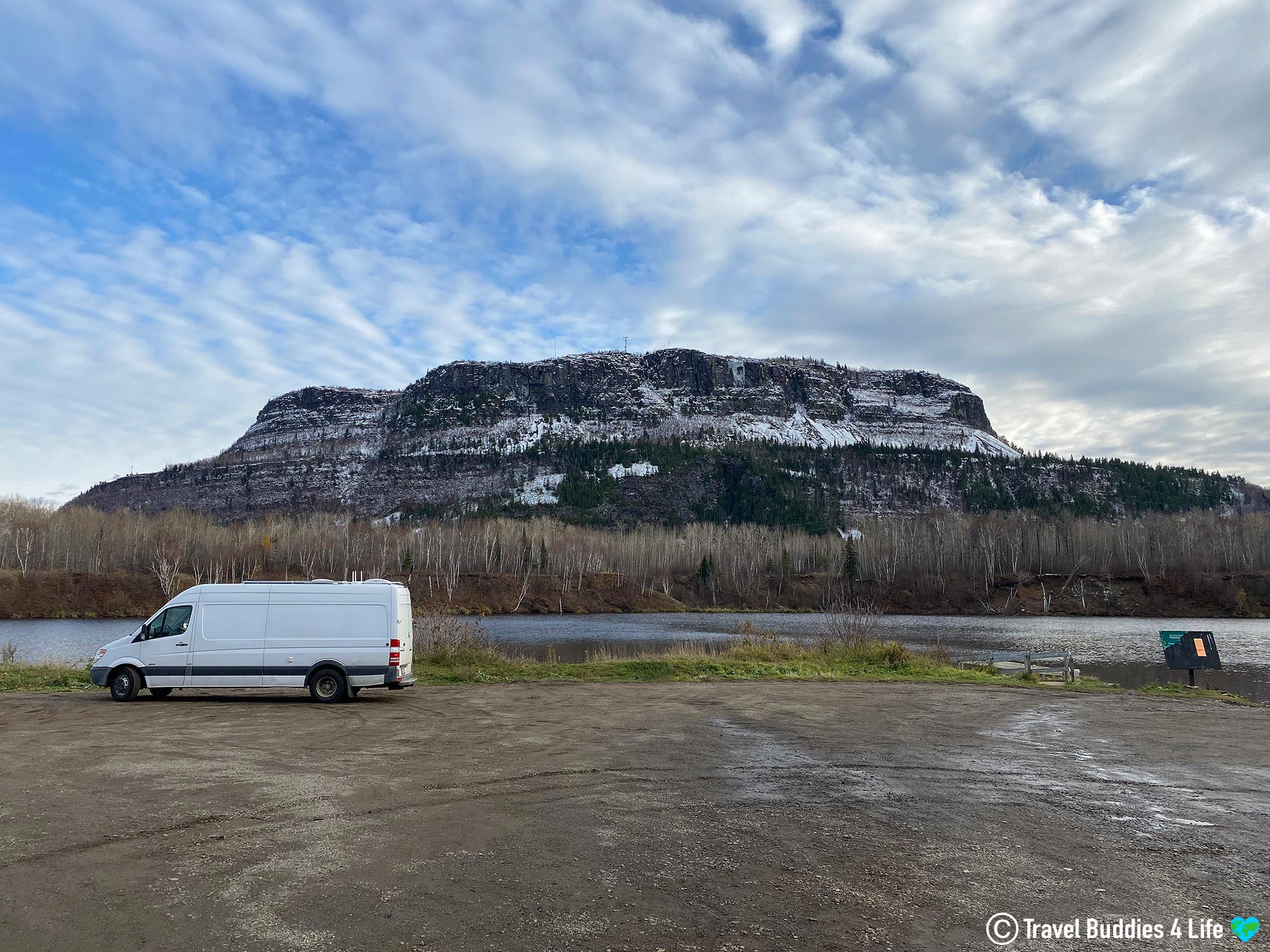
Joey and I are two highly active individuals. Those who know us well can attest we are adventure enthusiasts to the core. From nordic skiing to biking and scuba diving, there are few things we haven’t tried.
It’s been roughly a year since Joey and I have tackled one of our greatest adventures yet – designing and converting a Mercedes-Benz sprinter van into our own mini traveling RV. This van, dubbed “The Fish Bowl,” was built as a means to travel and scuba dive across Canada for our Canadian Splash underwater photography project. Initially, I wasn’t crazy about the idea of restricting myself to such a tiny living space. But this home-on-wheels, crafted specifically to accommodate our scuba diving addiction, has truly grown on me.
While our van is first and foremost a scuba-mobile, complete with tank storage and all, we have been pleasantly surprised at the variety of real-life applications we have been able to use it for. The more time we spend in our van, particularly as the seasons change, the more we have come to realize, our locker is pretty versatile in its adventure sports applications.
In the winter months, we have found the locker super useful for storing snowboard, nordic ski and snowshoe gear. In the summer, though we have not used it for these applications per se, the locker could in theory be used for surfing, paddleboarding and kayaking, pending you incorporate a kayak rack either on your roof or on a towable trailer.

Because of the particular use Joey and I had planned for The Fish Bowl, we custom-built the sprinter ourselves. With the unfailing help of my jack-of-all-trades parents, we pieced together everything from the cabinetry and countertops to the locker which would house all of our diving equipment.
A critical component to our van conversion was the living space. No matter what kinds of underwater or on-the-road adventures we would be undertaking, at the end of the day, the living quarters would be where we spend the bulk of our time cooking, working and living. The main items we wanted in the living space layout of our van were; a bed, a work/dining table, seating, counter space, a refrigerator and of course plenty of storage.
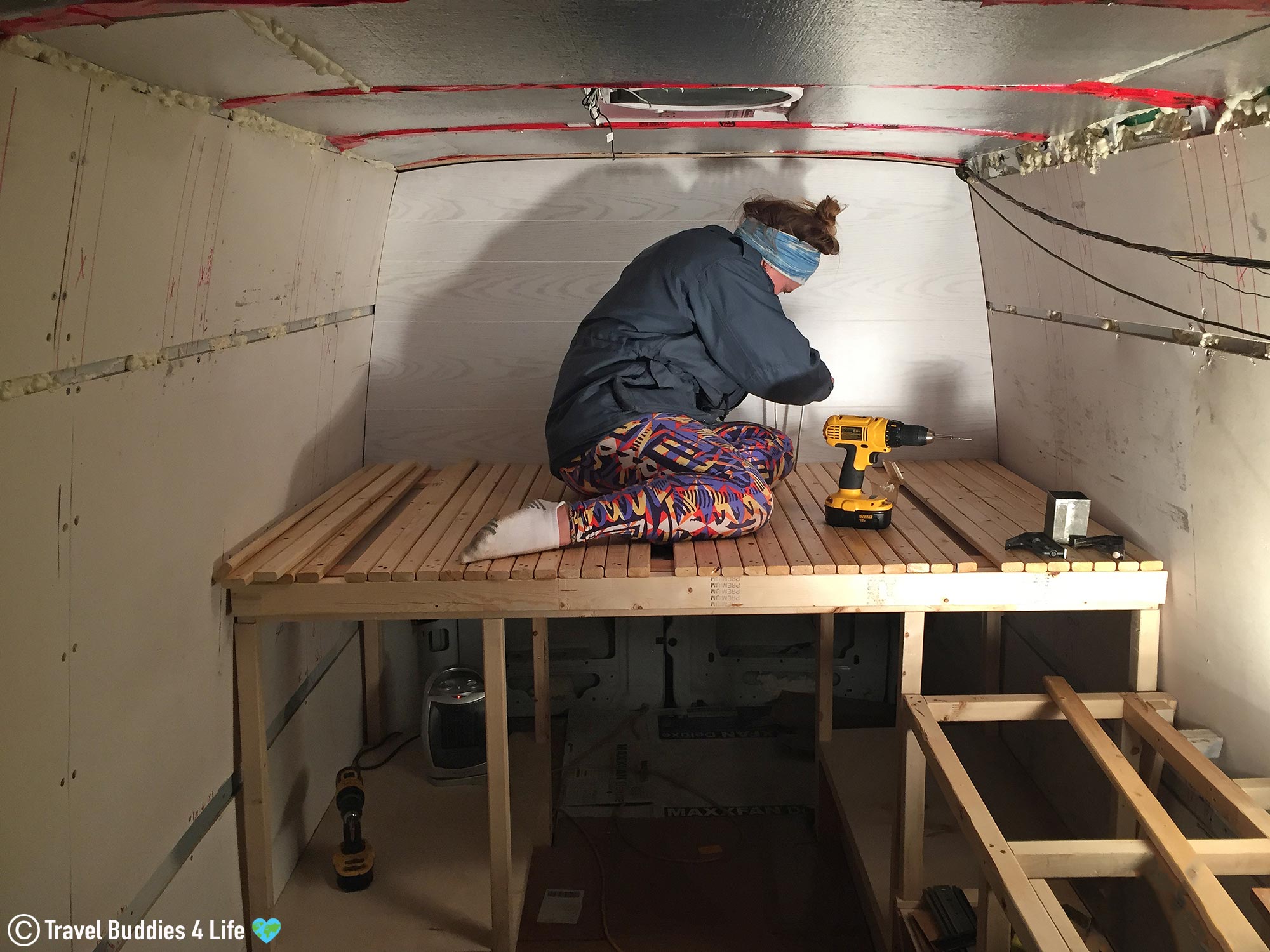
Because of the compact size of the sprinter van, we constructed our bed to be elevated and collapsable. Elevated so we could take advantage of storage space beneath the bed. Collapsible so we could fold the bed away during the day, affording us extra living space.
Size-wise, the bed is slightly smaller than a king. It is situated at the back of the van, pressed up against the rear wall of the dive locker. Above the head of our bed, my Dad crafted a narrow bookshelf to hold our reading material. At each extremity of the shelf, Joey wired charging ports for our mobile devices.
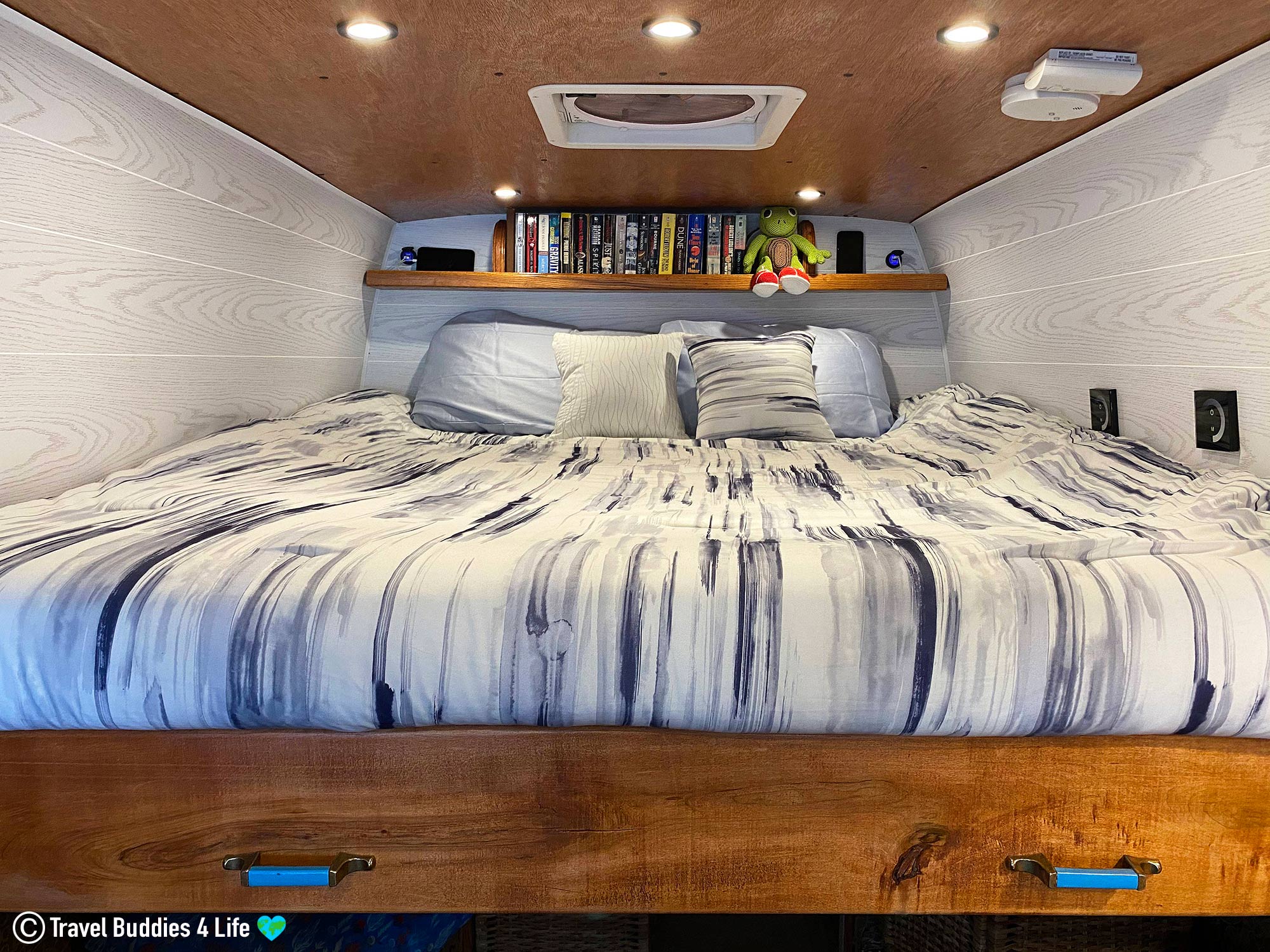
The van’s table and seating area can be found adjacent to the bed in the midsection of the Fish Bowl. To fulfill our seating needs, we created booth-style benches with empty compartments underneath for storage. The booth-benches are facing each other, and though a little tight, can squeeze a total of four adults.
A pocket table is what we opted to use for our eating and workstation between the booth seating. We mounted the table on drawer slides so that when the table is not in use, it can be tucked away under the bed. The table can comfortably accommodate two working adults across from one another.
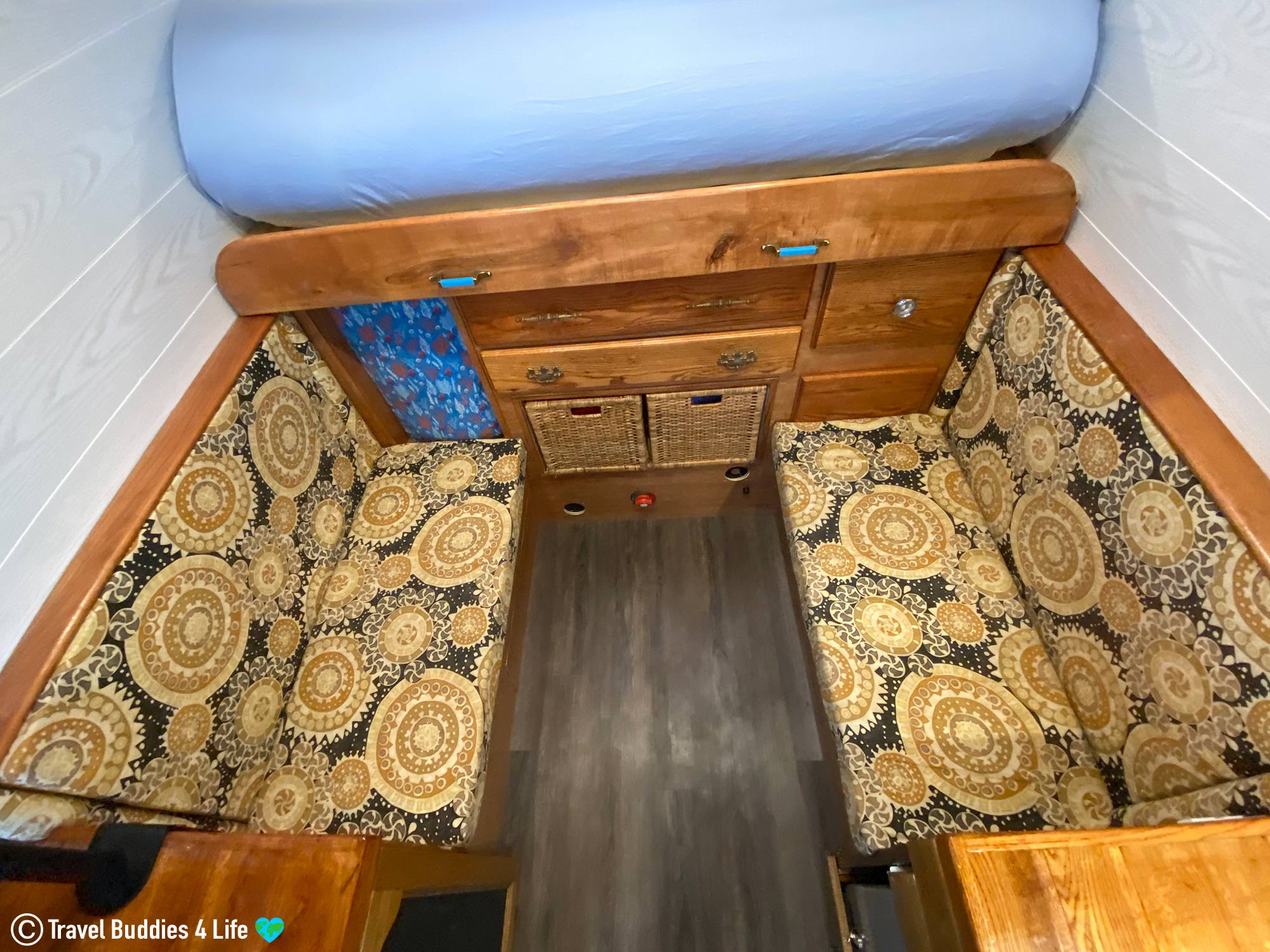
The cabinetry and storage is the final component of the van. This section runs from the edge of the booth benches to the back of the driver’s seat. One the opposing sliding door side, we have a smaller cabinet and countertop that extends from the booth benches to midway past the sliding door. There are also other storage spaces disbursed in nooks and crannies of the van.
Our cabinetry is a combination of storage cabinets, counter space and a spot for our mini chest-refrigerator. The cabinetry for all parts of the van was custom built to fit the slight curvature in the walls of the sprinter. Inside the cabinets, Joey and I have placed shelves, drawers and hanging racks depending on what we required for organization.
The chest-refrigerator is at the bottom of our cabinetry. It is boxed in on a slide-out drawer-style platform which allows us to access the fridge when needed and slide the fridge away when not in use. Incorporated into our cabinets are two distinct countertop cooking spaces. These countertops were created from scrap flooring brad nailed and glued together. On one of the countertop centers, I decided to incorporate a beautiful wood-burned turtle coaster made by my talented sister. Both van counters were finished with a glossy epoxy coating for protection.
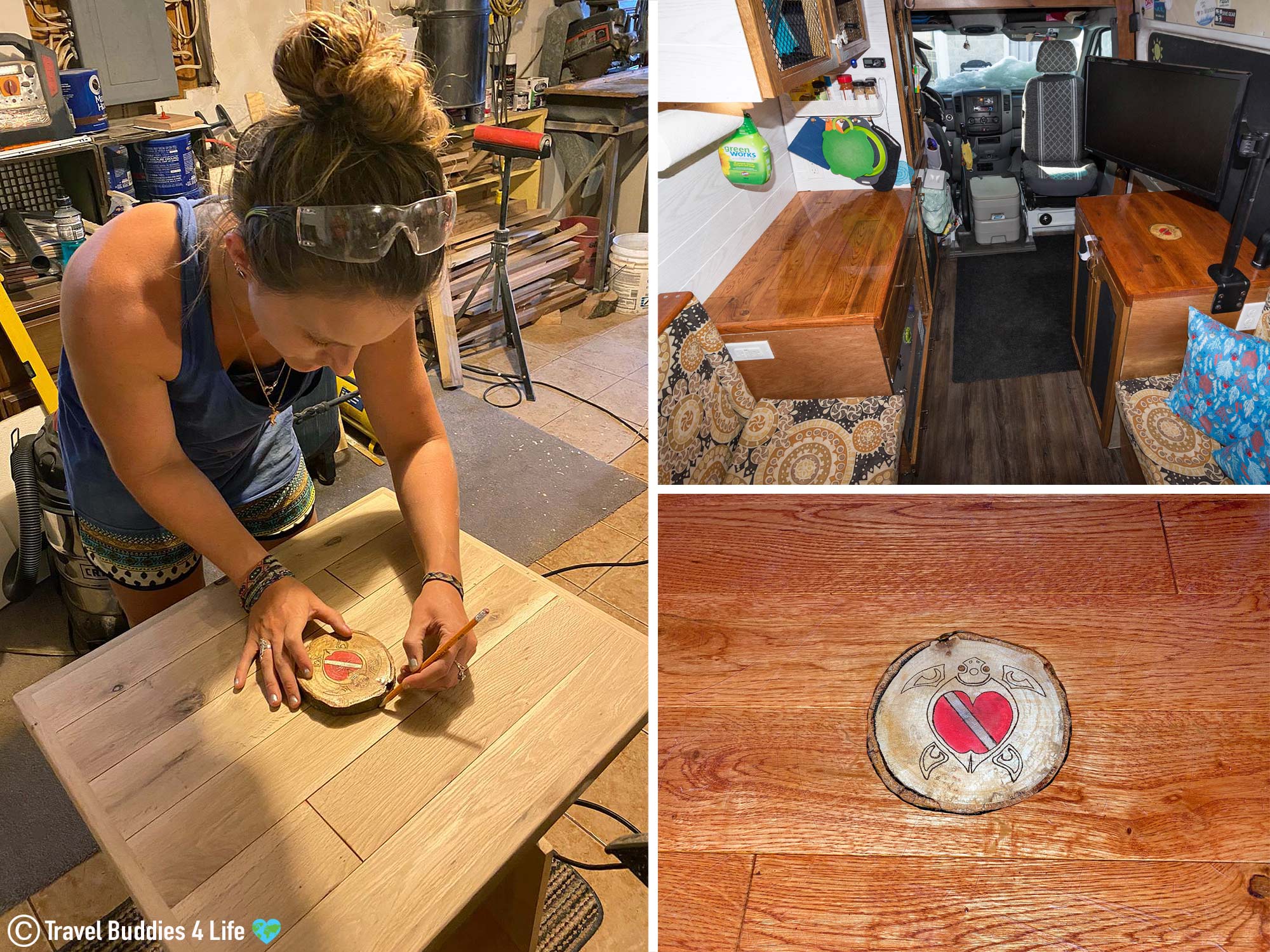
Our most recent sprinter van project has been to install a small heater beneath the passenger seat. We decided this would be a fitting addition to keep our miniature home toasty warm throughout the Canadian winter. The heater is an Espar Airtronic D2 and taps into the van’s diesel gas tank. The heater has a programmable thermostat and has kept us nice and toasty even as the temperatures have dropped down to a frigid -22°F (-30°C).
Converting a sprinter van with a scuba diving locker was the big focus of our conversion project. As avid adrenaline junkies, Joey and I wanted to ensure we had the capability and space to store all our equipment. Being first and foremost scuba divers, the main reason for the locker was to have a waterproof place to not only gear up pre and post-dive but also store and dry all of our equipment while on the road.
The dive locker is located in the rear portion of the sprinter. In terms of size, the locker measures approximately 86 centimeters by 178 centimeters (34 inches by 70 inches). The walls and floor are insulated and finished with water-proof fiberglass material typically found in bathtubs.
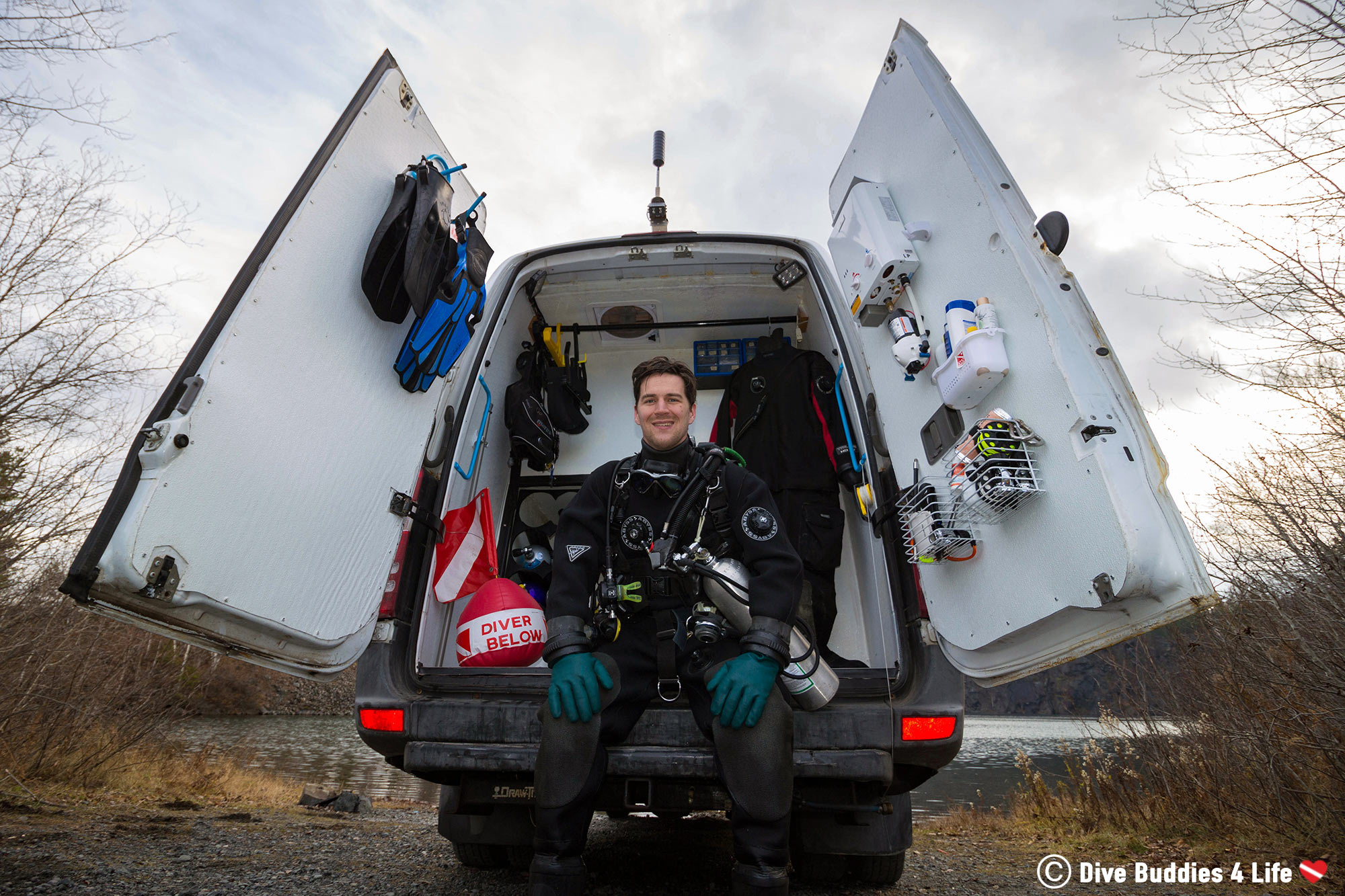
On the roof, we cut and inserted a fan to aerate the locker. The moisture and dampness stemming from our dive gear can get pretty musty. We also ran electricity to the back compartment in the form of a weather-resistant GFCI plug. This was crucial for not only charging lights and camera equipment but also for our drysuit hangers.
To further customize, Joey mounted a rust-resistant metal bar across the top of the locker. The pole spans across the width of the van and serves as a sturdy hanging spot for wet and heavy gear. We also mounted two square storage boxes in the upper right corner, above the hanging bar. These storage boxes serve as a place to store spare dive parts, repair material and miscellaneous small tools.
Another specialty feature in our locker is the scuba tank rack created by a plastic welder. The rack houses six 14 ½ -inch in diameter scuba tanks that are approximately 28 inches long. To prevent the 80 cubic foot tanks from rolling left and right, the rack is designed such that the sides of the holder cradles each individual tank. We also positioned the rack at a slight backward angle to keep the tanks from shifting back and forth.
The most recent addition to our dive locker is a piping system that channels warm air from the living quarters into the dive locker. This system was put in place when winter rolled around and our dive equipment began freezing in the back compartment. We created this to extend our diving season, allowing Joey and I to continue our Canadian underwater adventures into October, November and December. The puzzle of pipes are ABS plumbing pieces funneling air directly into our suits and into a glove drying rack.
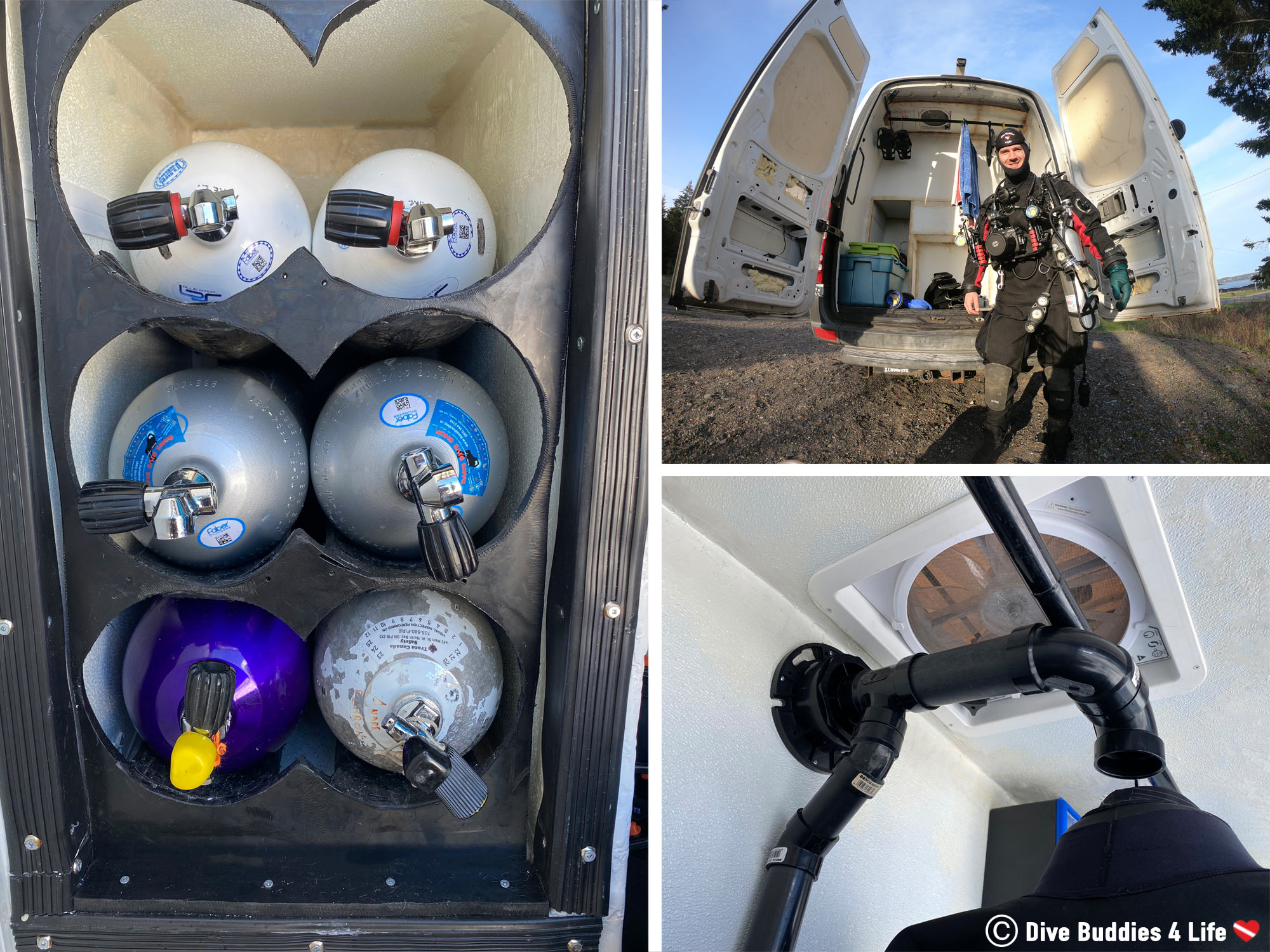
Like many RV’s, our dive van has a battery bank at the heart of its power supply. The Fish Bowl’s 420 amp-hour AGM battery bank is charged in multiple ways. The first is through shore power which can be hooked up to an external source, such as a campground power outlet. The second is via the 800 watts of solar panels on the roof. The last way our van charges is while driving, through its alternator. The car batteries are connected to the bank batteries through a Smart Battery Isolator.
When we are not being externally powered, a 3000-watt inverter connects our battery bank to the entire van’s power outlets so that even when we are camping away from shore power we have both 12 Volts DC and 120 Volts AC power options. The inverter is easily capable of running our double burner induction cooktops, refrigerator, waxing iron, gear dryers or charging mechanisms for our underwater cameras and dive torches.
No matter where in the world we are or how old we get, for us, scuba diving (and adventuring) never stops. It’s been over a year since Joey and I built out the Fish Bowl and we couldn’t be happier with the results. Looking back, as much as I was apprehensive about living in a sprinter van, this multifaceted mobile is the perfect litter vehicle for road-tripping and scuba diving all across Canada.
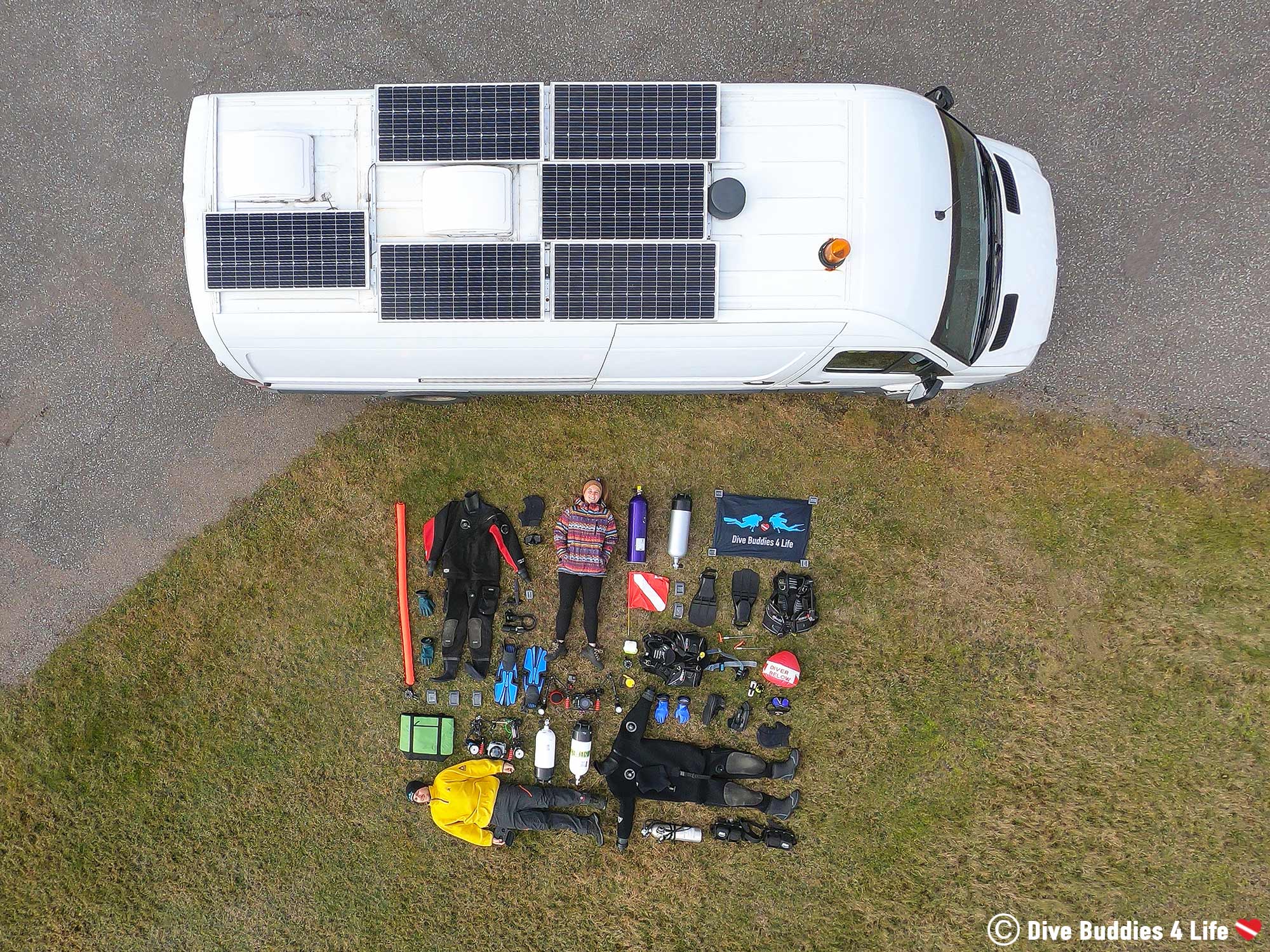
Are you dreaming of converting your very own sprinter van into an RV fully equipped for road tripping? What kinds of adventure sports are you thinking of undertaking?
Writers Note: A write up on our scuba diving and adventure van was featured in RV Magazine’s A Splashy Custom RV as a part of the May 2021 publication.
Additionally, this post may contain affiliate links. We will make a small commission if you make a purchase through one of these links, at no extra cost to you. See full disclosure and disclaimer policy here.

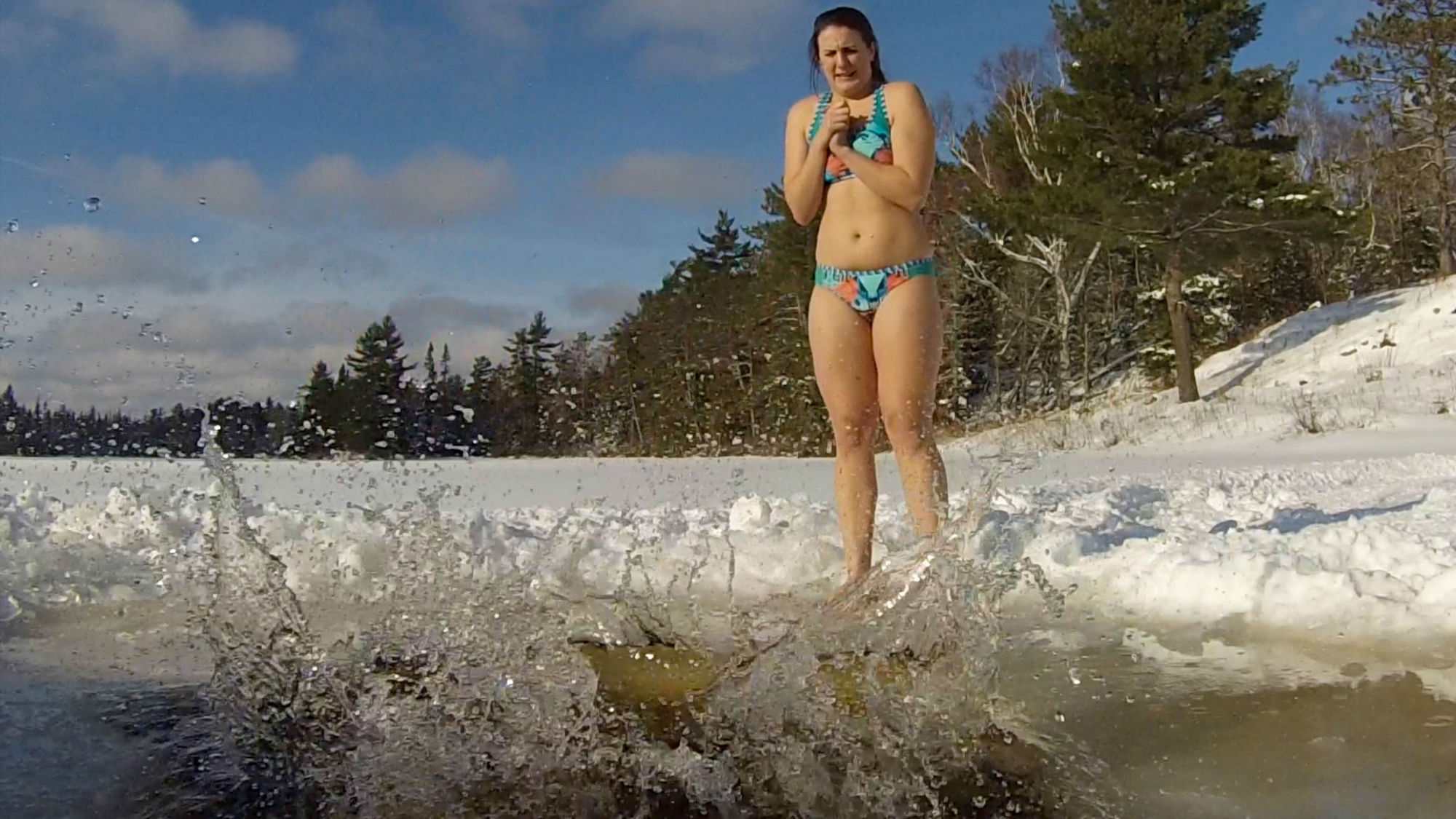
What better way to welcome the New Year than with a plunge into the cold lake waters of northern Ontario.

Kick your gaming up a notch by visiting the Diefenbunker, the world's largest escape room in Carp, Ontario.
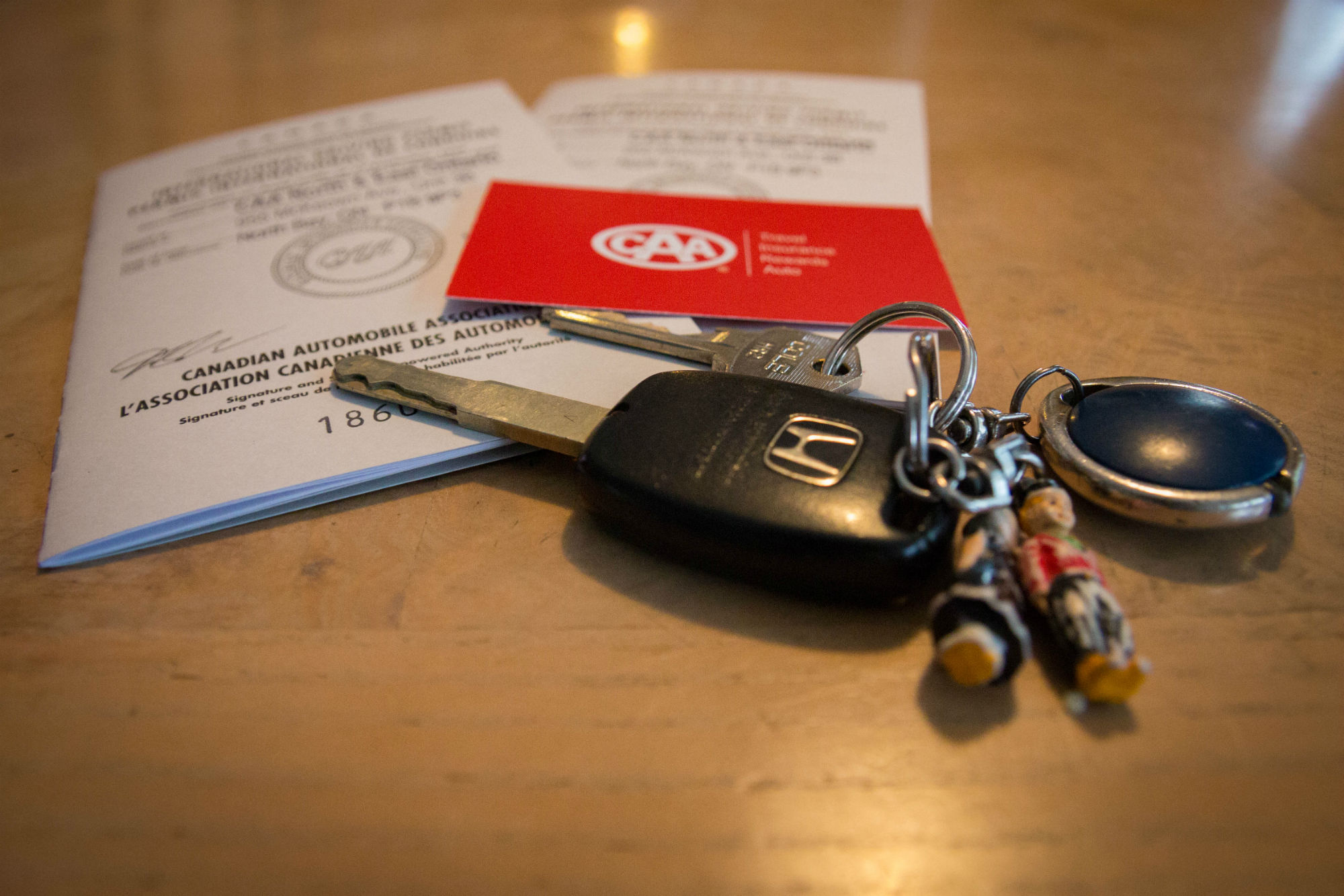
Thinking about driving around a foreign country? Getting an international drivers license may be something worth considering.
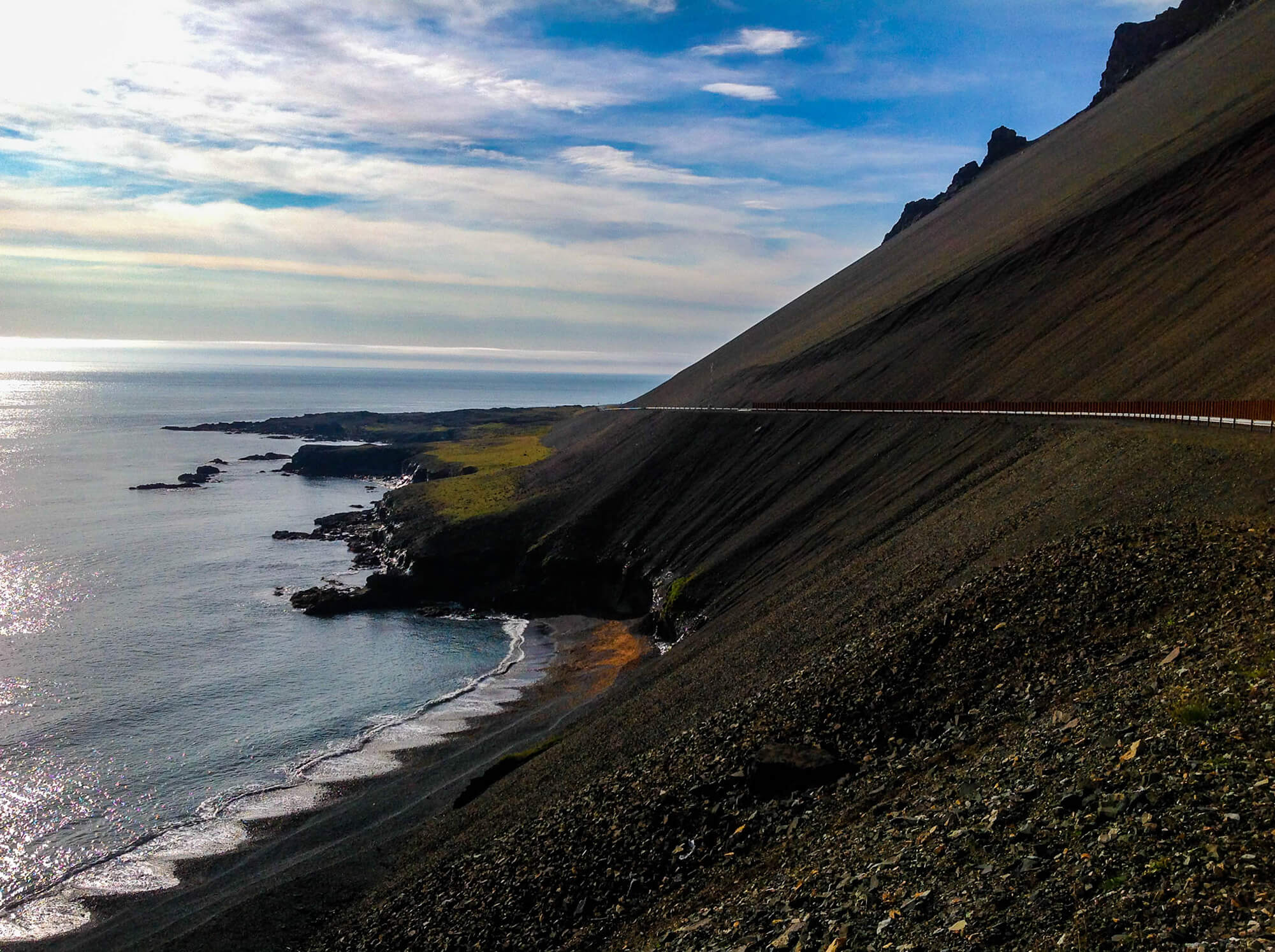
A small and affordable camping caravan, we never thought we'd be exploring Iceland in this throwback 70's mobile.
